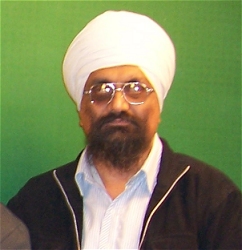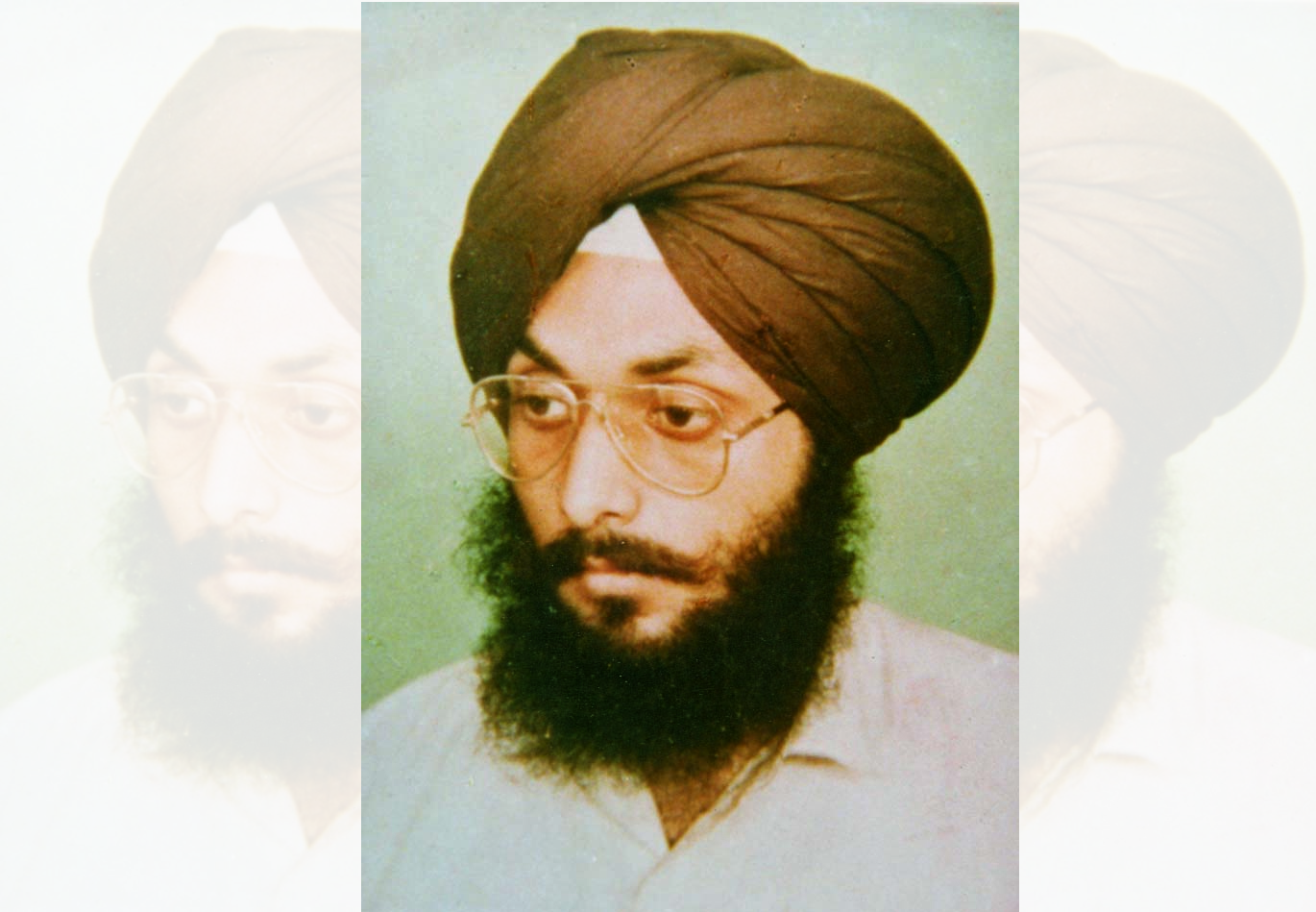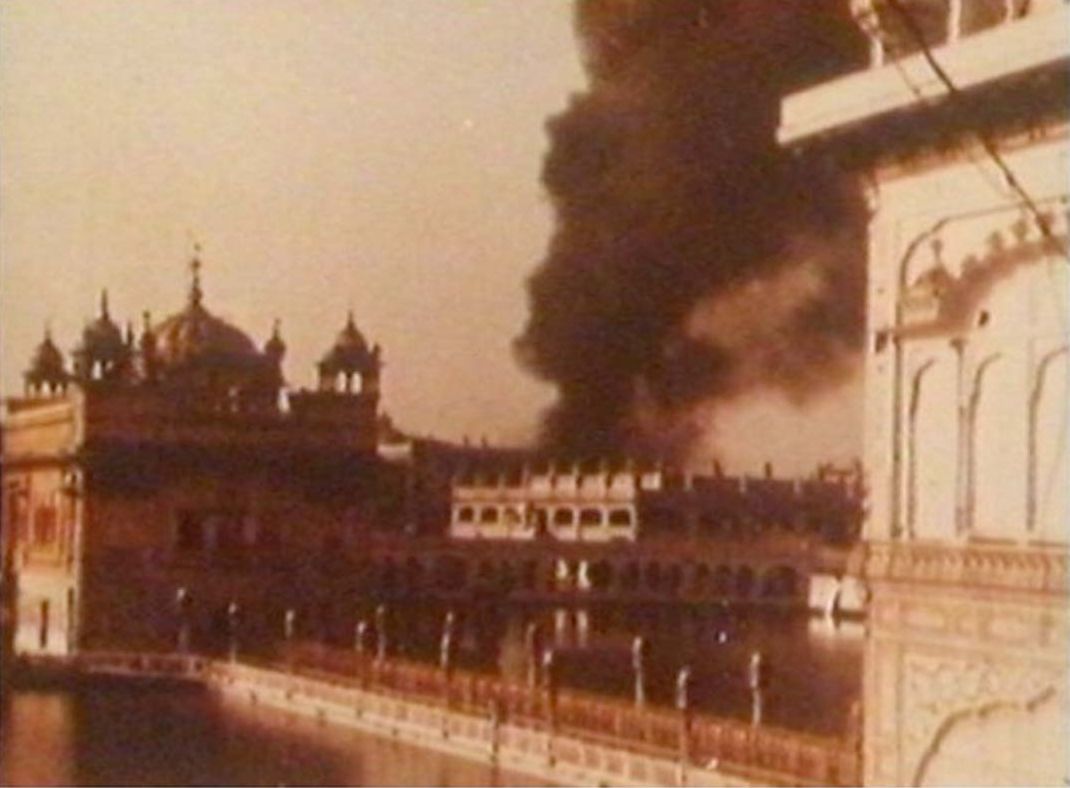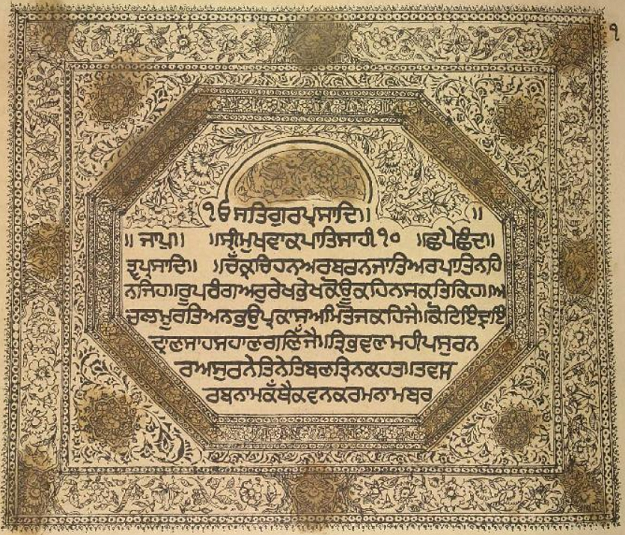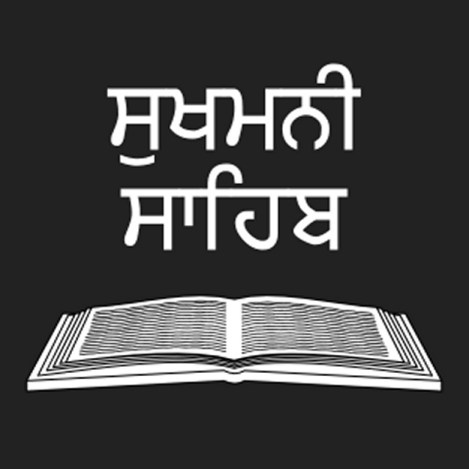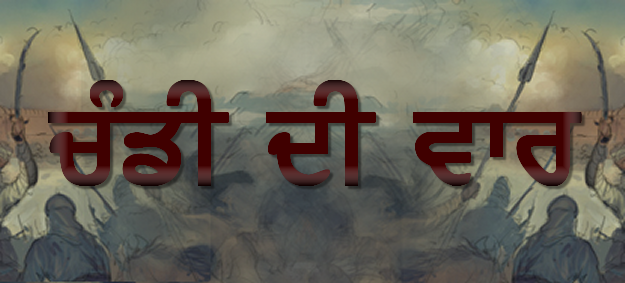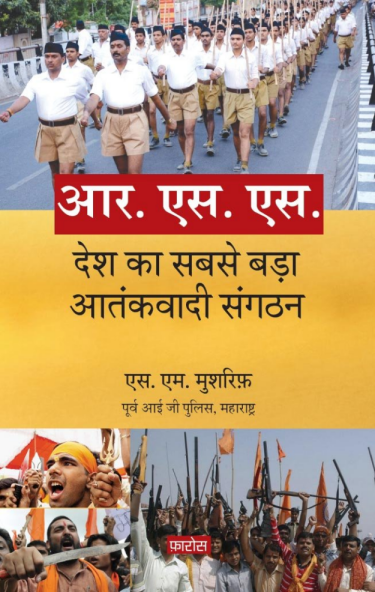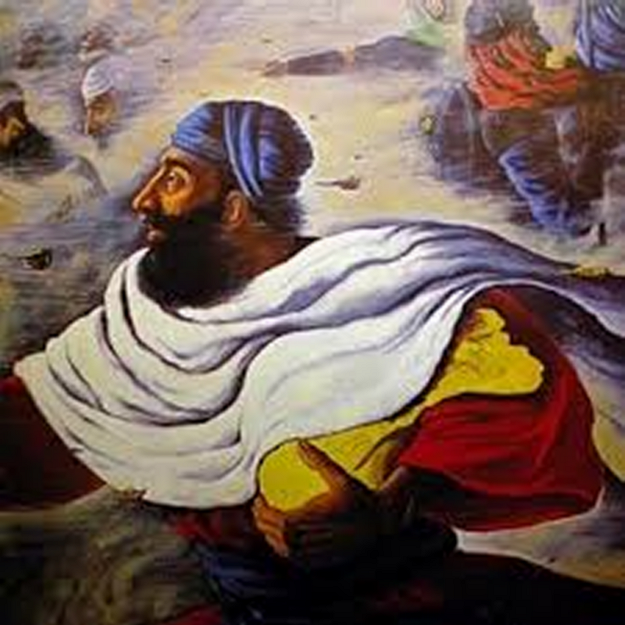
BABA ATAR SIṄGH, (1866-1927), of Mastûâṇâ, the most charismatic figure in latter-day Sikh piety, was born on 13 March 1866 in the village of Chîmâ, in Saṅgrûr district of the Punjab. His father, Karam Siṅgh, was a farmer of modest means and could not afford to send him to a school in town. So Atar Siṅgh was apprenticed to Bhâî Bûṭâ Siṅgh, head of the Nirmalâ ḍerâ or monastery of Bhâî Râm Siṅgh, in his own village. He acquired proficiency in the Sikh religious texts and also read philosophical treatises such as the Vichâr Sâgar. Side by side with his progress in Sikh learning, he developed a deeply religious cast of mind. While tending his cattle, he would become absorbed in reciting hymns from the Gurû Granth Sâhib.
At the age of seventeen, Atar Siṅgh enlisted as a gunner in the Artillery, later getting himself transferred to the 54th Sikh Battalion stationed at Kohâṭ. There he received Sikh initiation in the cantonment gurdwârâ and continued his study of the Scripture under the guidance of its granthî, Bhâî Jodh Siṅgh. He was still in the army when he took a vow not to marry.
This was a stimulating period of time in the Punjab. English education and Christian missionary activity had created a new ferment. The Ârya Samâj was the Hindu response to the situation and the Siṅgh Sabhâ represented the Sikh reaction. Atar Siṅgh became involved in the Siṅgh Sabhâ's dual concerns of restoring the purity of Sikh belief and custom and rejuvenating Sikh society and of promoting Western education among the Sikhs. In the first instance, he went on a pilgrimage to Srî Hazûr Sâhib at Nândeḍ, sacred to Gurû Gobind Siṅgh.
In 1888, Atar Siṅgh was placed in the reserve list and, in 1891, he got his name finally struck off the rolls of the army to devote himself solely to preaching the holy message of the Gurûs. He toured extensively in Jammû and Kashmîr, Sindh and the North-West Frontier Province. In the Poṭhohâr region, many Sikhs and Hindus received pâhul at his hands. Master Târâ Siṅgh, who later became famous as a political leader, and Bhâî Jodh Siṅgh, eminent and educationist, were administered the rites of Khâlsâ baptism by him at Ḍerâ Khâlsâ. In Jammû and Kashmîr, he visited Srînagar, Mîrpur and other towns which had Sikh populations. At Peshâwar, in the North-West Frontier Province, he was received with honour not only by the Hindus and the Sikhs, but also by the Paṭhâns.
In Sindh, he visited Sakkhar, Hyderâbâd and Karâchî. In 1902, he established his main centre in the Mâlvâ region, at Gursâgar Mastûâṇâ, near Saṅgrûr. By his extensive tours and his melodious and resonant recitations of the Gurûs' bâṇî before vast audiences, he created a new religious fervour in the Sikh community. Many were impressed by his gentle and spiritual manner and were drawn into the fold of Sikhism. New gurdwârâs sprang at in several places in the wake of Baba Atar Siṅgh's visit.
After 1920, Baba Atar Siṅgh focussed his attention on the area around Damdamâ Sâhib where Gurû Gobind Siṅgh had sojourned in 1706 before proceeding to the South. At Damdamâ Sâhib, he raised a magnificent buṅgâ and turned it into a major centre for the propagation of Sikhism. He sent abroad four Sikh young men --- Tejâ Siṅgh, Amar Siṅgh, Dharmânant Siṅgh and Harî Siṅgh Basrâ --- for the twin purposes of receiving higher education and spreading the Gurûs' message. Tejâ Siṅgh set up in London the Khâlsâ Jathâ of the British Isles, and later went to the United States of America. He took his Master's degree at Harvard University and lectured on Sikhism widely in America and Canada, besides espousing the cause of Punjabi immigrants. Dharmânant Siṅgh received his Ph. D. degree from London University specializing in Platonic studies.
The Khâlsâ College Committee, Amritsar, requested Baba Atar Siṅgh to represent it at the Delhi Darbâr in 1911. However, he went to Delhi as a guest of the Mahârâjâ of Jînd. He was a distinguished participant in the ceremonial procession taken out from Paṭiâlâ House in Delhi in which, apart from the people in general, the chiefs of Paṭiâlâ and Jînd participated. As he rode on an elegantly caparisoned elephant, he looked the very picture of holiness. He was naturally the centre of attention, overshadowing the princes. The sacred hymn he was reciting on that occasion of extraordinary display of imperial power and panoply contrasted the infirmity of worldly rulers with the omnipotence of the God Almighty. The opening lines ran :
None of the sovereigns equals Hari the Almighty;
All these worldly rulers last but a bare few days.
False are the claims they set up.
(GG, 856)
Equally with preaching the Word of the Gurûs, Baba Atar Siṅgh concerned himself with the promotion of modern education among Sikhs. He associated himself actively with the Sikh Educational Conference and participated in its annual sessions, presiding over that of 1915 at Fîrozpur. He helped found several institutions such as Khâlsâ High School, Lyallpur, Khâlsâ High School, Chakvâl, Missionary College, Gujrâṅwâlâ, Gurû Nânak Khâlsâ College, Gujrâṅwâlâ, Mâlvâ Khâlsâ High School, Ludhiâṇâ, and Akâl College, Mastûâṇâ.
In 1914, he went to Banâras at the invitation of Paṇḍit Madan Mohan Mâlavîya to participate in the ceremonies for laying the foundation of the Sanskrit College. Mahârâjâ Ripudaman Siṅgh of Nâbhâ, who was an admirer of Baba Atar Siṅgh took him to Vârâṇasî in his own saloon. Under the tent near the site of the college, Baba Atar Siṅgh performed a series of five akhaṇḍ pâṭhs, or continuous, uninterrupted readings of the Gurû Granth Sâhib, Mahârâjâ Ripudaman Siṅgh saying the Rahrâsi every evening. As these recitations of the Gurû Granth Sâhib were concluded, Mahârâjâ Gaṅgâ Siṅgh of Bîkâner offered concrete in a silver plate and Santjî laid the foundation of the building by applying it to the eleven bricks of gold supplied by the Râjâ of Kâshî. After the ceremonies were over, Baba Atar Siṅgh remained in Vârâṇasî for a week as the guest of the Râjâ who treated him with deep reverence.
Baba Atar Siṅgh shared the Sikh community's wider social and religious concerns. He supported the Gurdwârâ reform movement, and took part in the dîvân held at Nankâṇâ Sâhib by the Shiromaṇî Gurdwârâ Parbandhak Committee in honour of the Nankâṇâ Sâhib martyrs in 1921. He was invited to attend the Bhog ceremonies at the conclusion of the Akâlî morchâ at Jaito. In a report prepared in 1911 by the intelligence department of the Government of India, Baba Atar Siṅgh was described as the inspiration behind the Tatt Khâlsâ movement among the Sikhs. It was to this school of reformist Sikhs that the origins of the Akâlî movement can be traced.
On 31 January 1927, Baba Atar Siṅgh passed away at Saṅgrûr. His body was cremated at Mastûâṇâ.


